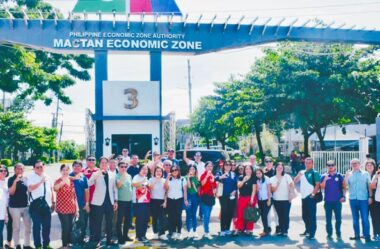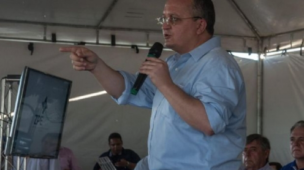Tempo de leitura: 4 minutos
Every nation seeks economic growth for the prosperity and welfare of its people, and to succeed in that endeavor in the modern age requires innovative strategies to attract investments, promote exports, and encourage private enterprises to create employment opportunities.
One such strategy employed by the Philippines is the establishment of Special Economic Zones (SEZs) under the auspices of the Special Economic Zone Act, officially known as Republic Act No. 7916. Enacted in 1995, this landmark legislation provides a legal framework for the creation, operation, and regulation of SEZs across the archipelago, aiming to harness the country’s economic potential and propel it onto the global stage.
At its core, the SEZ Act seeks to stimulate economic activity and foster industrialization by designating specific areas as SEZs, endowed with a suite of incentives and benefits to entice both domestic and foreign investors.
Businesses and enterprises who conduct their operations in these specific areas are then entitled to both fiscal and non-fiscal. Naturally, these added benefits serve as powerful magnets for investments, especially into sectors deemed crucial for national development. From reduced corporate income tax rates to streamlined regulatory processes and access to world-class infrastructure, SEZs offer an attractive proposition for businesses looking to establish or expand their operations in the Philippines.
The SEZ Act classifies SEZs into various types, each tailored to accommodate specific industries or activities, ranging from Freeport Zones, Agro-Industrial Economic Zones, and more.
Manufacturing Economic Zones are specialized areas focused on accommodating manufacturing industries, including automotive, electronics, garments, and other value-added manufacturing activities. Examples of this type of special economic zone is the Toyota Sta. Rosa, Laguna — SEPZ Industrial Complex and the Mactan Export Processing Zone in Cebu City.

Manufacturing zones aim to attract foreign direct investments in manufacturing, promote technology transfer, and enhance the competitiveness of the Philippine manufacturing sector. These zones often feature industrial parks, industrial estates, and export processing zones, facilitating the establishment of manufacturing facilities and production lines.
Meanwhile, Agro-Industrial Economic Zones are designated areas for agribusiness and agro-industrial activities. Focusing on rural development and agricultural modernization, these zones provide facilities and services to support agricultural processing, manufacturing, and value-added activities, often integrating farming, processing, and marketing activities to create synergies along the agricultural value chain.
Examples of Agro-Industrial Economic Zones are the Sarangani Agro-Industrial Eco Zone and the AJMR Agro-Industrial Economic Zone in Davao City.
In contrast to the aforementioned zones, which focused on consumer goods, Tourism Economic Zones (TEZ) are dedicated to promoting tourism-related activities, including resorts, hotels, leisure facilities, and eco-tourism projects. Businesses doing operations in these zones are centered on services, such as providing transportation networks, accommodations, and entertainment amenities.
TEZs aim to attract both domestic and international tourists, contributing to the development of the local tourism industry and generating employment opportunities. In 2022, the local government of Pagudpud in Ilocos Norte announced their intention to establish a tourism economic zone in Barangay Caparispisan.
Similarly, Information Technology (IT) Parks focus on the service-centric strengths of the Filipino workforce. IT Parks are SEZs focused on hosting IT and business process outsourcing (BPO) companies, software development firms, and technology-related enterprises, providing incentives, state-of-the-art infrastructure, telecommunications facilities, and support services to foster the growth of the IT and BPO sectors.
Given the significance of the IT and BPO sector to the Philippine economy, there are plenty of IT Parks all over the country, such as the Cebu IT Park and the Batangas State University (BatStateU) Knowledge, Innovation, and Science Technology (KIST) Park established in Batangas City in 2020.
There are also ecozones for industries like medicine, such as Medical Tourism Parks, ecozones designed to promote medical tourism. Most recently, the Philippine Economic Zone Authority announced their plans to launch new pharmaceutical-medical device (pharma-dev) economic zones within 2024, with four locations across the country already under consideration.
Special economic zones are a key component in making a country more competitive and productive through facilitating the exchange of ideas, information, and technology. And they will continue to play a driving role in the Philippines’ economic plan, with the Senate approving a bill promoting the establishment of the new Bulacan Special Economic Zone and Freeport this month.
Senator Mary Grace S. Poe-Llamanzares, chairperson of the Senate panel on public services and sponsor of the bill, said she hopes the establishment of an ecozone will open the doors for more investments and more jobs in Bulacan.
“I witnessed the signing of the NAIA [Public-Private Partnership] project and it brought about a lot of hope because I feel now the gateway for many of our visitors to our country will be much improved,” the senator previously said in a speech.
“The same way, I have high hopes for this ecozone that it will spur investment, create more jobs and will actually be a model, not just here in the Philippines, but all over Asia, that would hopefully increase our gross domestic product,” she added.
Fonte/Fotos: Business World







Os comentários foram encerrados, mas trackbacks e pingbacks estão abertos.